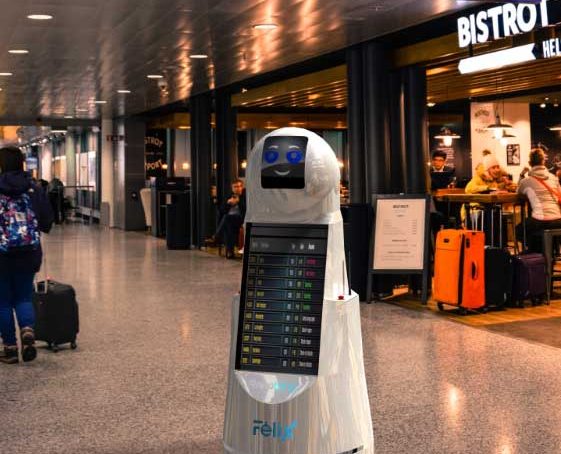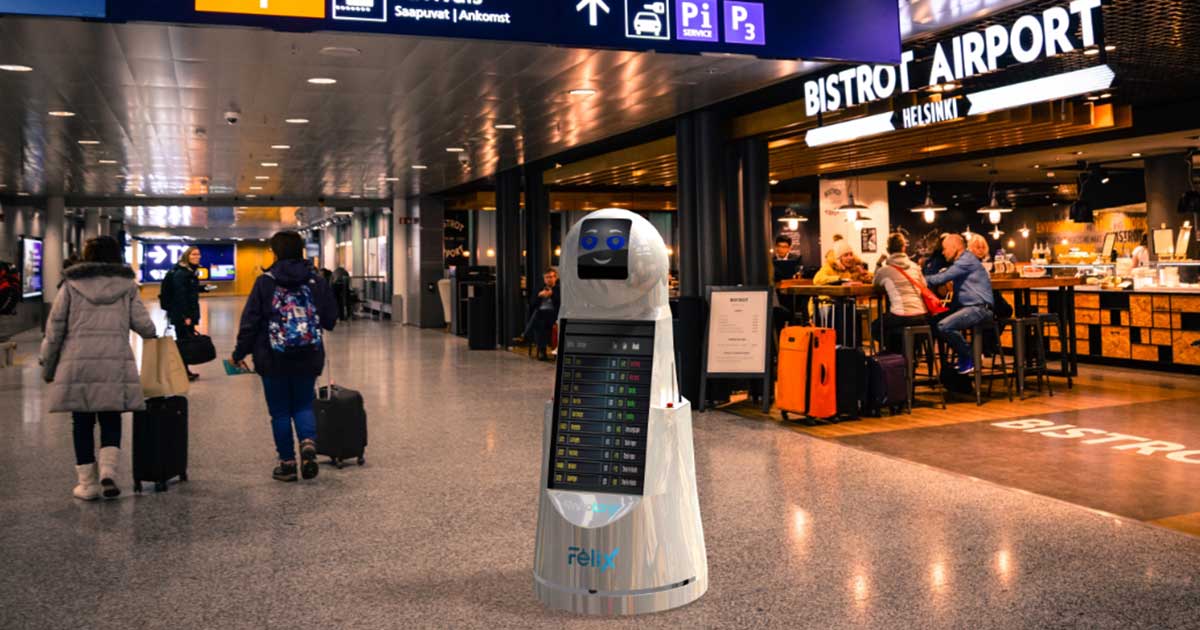

Felix, from Revotonix

Artificial intelligence, service automation and robots are marking their first steps in the hospitality industry. Serge Chamelian, managing partner of h-hotelier, helps us navigate these uncharted waters
One of the key competitive advantages of travel, tourism and hospitality companies is the creation of memorable guest experiences through various tangible and intangible tools. The use of robots provides an innovative way to create these unique experiences. Robotics provides vast opportunities for travel, tourism and hospitality companies to improve their operations and productivity, deliver consistent product quality and transfer some of the service delivery process to the customer.
Embracing the technology
The implementation of robotics technology has taken effect in various sectors of the travel, tourism and hospitality sectors.
Hotels
Chinese hotels are among the early pioneers in embracing this technology; Flyzoo Hotel, Alibaba Group’s first futuristic hotel, employs facial recognition technology for guests to check in, use the elevators and unlock the doors to their rooms, while also adopting voice command technology to control room appliances. Moreover, robots roam the hotel restaurant, delivering food and mixing drinks at the bar. Robots have not entirely replaced humans in Flyzoo Hotel; the property still employs cleaners and reception staff to assist guests who do not want their faces scanned, prefer to check in using the conventional method and open their rooms with key cards. However, this hotel certainly serves as an incubator for the technology that Alibaba wants to sell to the hotel industry in the future.
The hotel Henn na (Japan) represents the first robot-staffed hotel, featuring robotic front desk agents, porters, in-room assistants, vacuum cleaners and a robotic arm operating the luggage storage room. In 2014, Starwood’s Aloft Hotels (California) started testing a robot named Botlr to deliver toothbrushes and towels to hotel guests. The robot can navigate the hotel, use the elevator and call a guest’s room to deliver requested items to their door. In 2016, Hilton Hotels launched a robotic concierge called Connie that can communicate with hotel guests, answering their questions about hotel amenities and services, and providing suggestions for nearby attractions and activities.
Travel agents
A robotic virtual agent named SARA provides tourists in Singapore with information on local attractions, restaurants, sightseeing, directions and transportation services. SARA detects the location of a tourist by using a GPS-integrated module and provides real-time assistance and (re)orientation.
Airports
A bag-drop robot has been tested at Geneva International Airport, which meets customers outside of the facility, scans their boarding passes, prints out luggage tags and stores the luggage in a special compartment. The robot can take up to two suitcases and deliver them to the luggage area inside the airport, allowing travelers to avoid lines and proceed directly to the security area.
Museums
Robots can be used in a museum or gallery to provide information about the exhibits, answer questions, direct visitors to the exhibition halls, toilets or other areas. In fact, they lend themselves to these set-ups for several reasons: firstly, a robot guide in a museum is operating in a confined space which can be easily mapped in its entirety, thereby facilitating movement within the building; secondly, it faces a relatively limited number of human-robot interaction situations, almost all of which will be related to the provision of information about the exhibits or the premises; and thirdly, the robot is based indoors, protecting it from the effects of the weather. Given the fact that museums and galleries often occupy large physical spaces, robots could also be used for cleaning floors.
Cruise ships
The adoption of modern technology on cruise ships has been more visible to passengers when robot-shaped. Two companies stand out in this field, namely Royal Caribbean, which introduced robotic arms named the Quantum of the Seas at the bar in 2014 that could prepare a wide range of drinks, while Costa Cruises launched Robot Pepper, complete with human-like features, to interact with passengers. Robot Pepper forms part of the crew and is able to give information about the ship itself and the activities available on board.
Now and then
The use of robots in travel, tourism and hospitality is still at an early stage. However, companies are increasingly taking their first steps by adopting them in areas such as: the provision of information (hotel receptions, museums and galleries); gardening (automated lawnmowers); cleaning ( robotic vacuum cleaners and robotic pool cleaners); airports, as guides; restaurant kitchens and bars, for cooking and bartending; and room service delivery. The hope is that existing customers will find them fun and exciting, while new customers, especially technology fans and families with children, will be keen to discover more about them.
Add to Favorites















